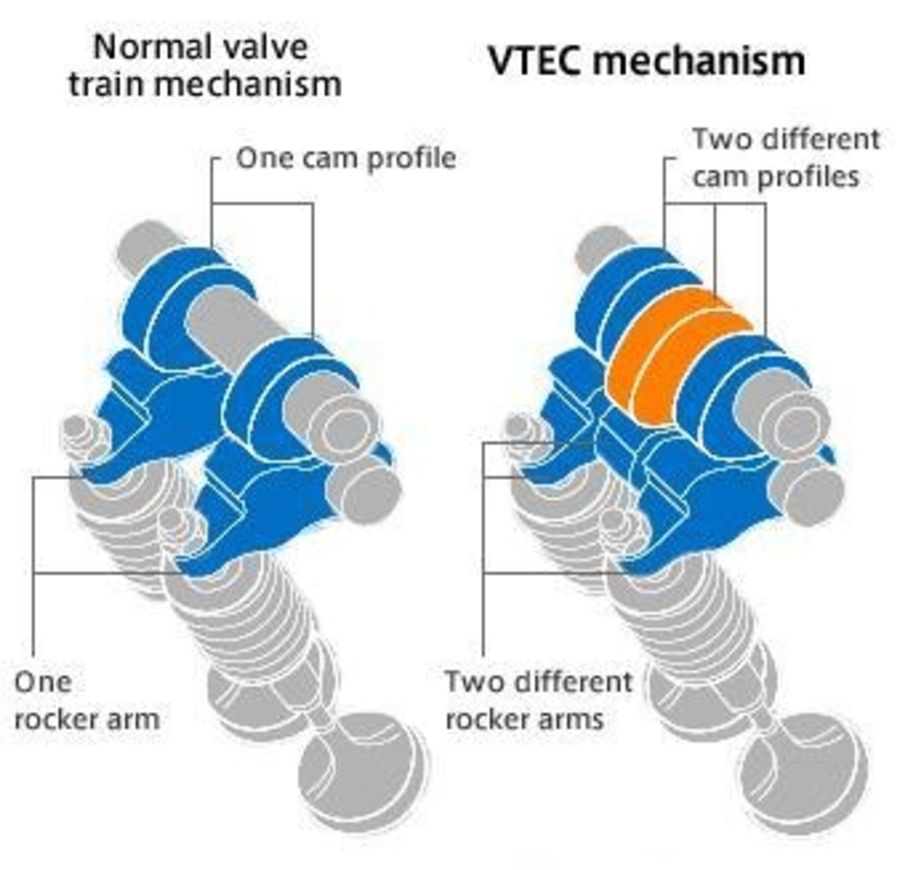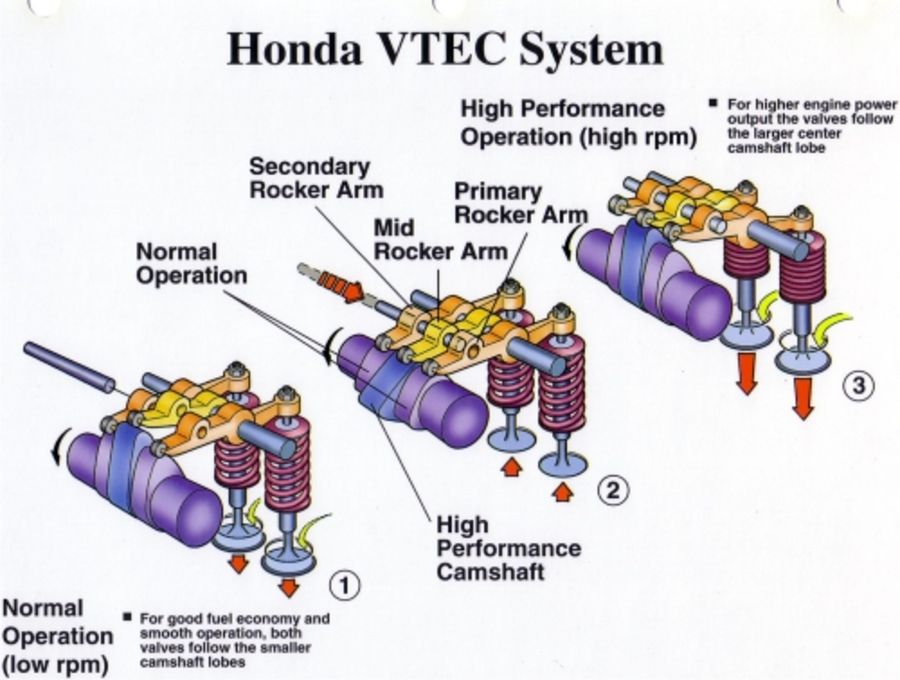Variable Valve Timing with Intelligence (VVT+I) Toyota or Valve Timing Electronic Control (VTEC) Honda
You must heard of Vtec system from Honda owners. Such a feeling that it's a strange magical boost in the engine of your car. However they are not the special and almost all car manufacturers have the same technology for their engines. For example Toyota has VVT-i. But what is the difference?
Actually they both do the same thing.... that's just names to differentiate the Toyota system from the Honda one.

It is the same BMW's Valvetronic, VANOS system, Porsche's VarioCam sistem, Citroen & Peugeot's Continuous Variable Valve Timing (CVVT) System, and some others that i can not remember at this time. This is a little explanation of how it works:

Variable valve timing, or VVT, is a generic term for an automobile piston engine technology. VVT allows the lift or duration or timing (some or all) of the intake or exhaust valves (or both) to be changed while the engine is in operation. Two stroke engines use a Power valve system to get similar results to VVT.
Piston engines normally use poppet valves for intake and exhaust. These are driven (directly or indirectly) by cams on a camshaft. The cams open the valves (lift) for a certain amount of time (duration) during each intake and exhaust cycle. The timing of the valve opening and closing is also important. The camshaft is driven by the crankshaft through timing belts, gears or chains.
The profile, or position and shape of the cam lobes on the shaft, is optimized for a certain engine rpm, and this tradeoff normally limits low-end torque or high-end power. VVT allows the cam profile to change, which results in greater efficiency and power.
At high engine speeds, an engine requires large amounts of air. However, the intake valves may close before all the air has been given a chance to flow in, reducing performance.
On the other hand, if the cam keeps the valves open for longer periods of time, as with a racing cam, problems start to occur at the lower engine speeds. This will cause unburnt fuel to exit the engine since the valves are still open. This leads to lower engine performance and increased emissions.
Pressure to meet environmental goals and fuel efficiency standards is forcing car manufacturers to turn to VVT as a solution. Most simple VVT systems (like Mazda's S-VT) advance or ****** the timing of the intake or exhaust valves. Others (like Honda's VTEC) switch between two sets of cam lobes at a certain engine RPM. Still others (like BMW's Valvetronic) can alter timing and lift continuously, which is called Continuous variable valve timing or CVVT.























